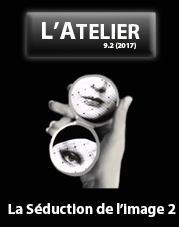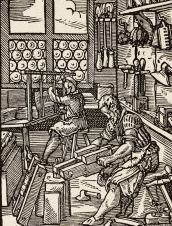Southern (African) Belles & the Aesthetic Forms of Seduction: Portraying Zulu Women in Early Twentieth Century Postcards
Mots-clés :
Postcards, Zulu, South Africa, EmpireRésumé
This paper concerns itself with the way South African and European postcards portrayed Zulu women at the turn of the 19th and 20th centuries to cater to a growing postcard industry. It approaches the White male paradigm through Baudrillard’s vision. Likewise, using his insight into the “system of objects”, and his mobilisation of the libido by the image, this paper endeavours to deconstruct the process of seduction that is generated at various stages in the existence of a postcard, from its creation to its preservation in a private album. The visual analysis of the mechanisms of seduction and the projection of one’s frame of mind to objectify the “subject” (like the cinema and the theatre, postcards were a travesty of reality) is at the heart of this paper. Drawing from about 280 postcards representing Zulu women, published at the beginning of the 20th century, this paper also foregrounds the diverse processes of seduction: what interactions are established between the artist, its product and the spectator / consumer. How is the gaze caught up by the piece of work? How is he stripped of his capacity to analyse what is happening to him? And finally, why is he kept in a permanent state of unfulfilled desire and frustration?
Cet article s’intéresse à la manière dont les cartes postales publiées en Afrique du Sud et en Europe au tournant du 19e et du 20e siècle ont dressé le portrait de femmes zouloues afin de répondre à la demande croissante de l'industrie de la carte postale. Nous aborderons le thème du paradigme masculin blanc à travers la vision de Baudrillard. De même, en utilisant sa manière de voir les choses grâce à son « Système des objets », et la stimulation de la libido par l'image, cet article s'efforce de déconstruire le processus de séduction qui est produit lors des diverses étapes de la fabrication d'une carte postale, depuis la prise d'une photographie, ou la réalisation d'un dessin ou d'une gravure, jusqu'à sa préservation dans un album de collection. L'analyse visuelle des mécanismes de séduction et la projection d'un cadre de pensée afin d'objectifier le « sujet » (tout comme le cinéma et le théâtre, les cartes postales sont un travesti de réalité) sont au centre de cet article. En se basant sur un corpus de quelques 280 cartes postales représentant des femmes zouloues publiées au début du 20e siècle, cet article aborde les divers processus de la séduction : quelles interactions s'établissent entre l'artiste, le producteur et le spectateur / consommateur. Comment le regard est-il saisi par l’œuvre ? Comment-est-il privé de sa capacité à analyser ce qui lui arrive ? Et finalement, pourquoi est-il maintenu dans un état permanent de désir inassouvi et de frustration ?
Téléchargements
Fichiers supplémentaires
Publiée
Numéro
Rubrique
Licence
-
L’envoi spontané d’un article à la rédaction de L’Atelier implique l’autorisation de publication et la cession des droits dans les limites établies par la loi de propriété intellectuelle.
-
L’Atelier conserve les droits de reproduction des articles publiés, quelque soit le support : internet, CD ROM, réimpression, photocopie, etc.
-
L’auteur conserve le droit de publier ultérieurement son article déjà paru dans L’Atelier avec la seule obligation de mentionner le nom de la revue comme source de la première publication.


